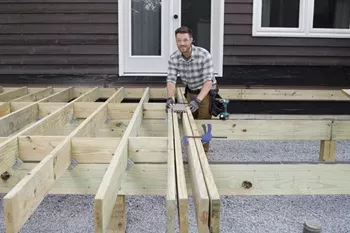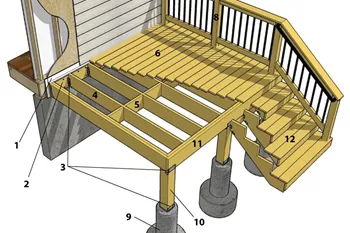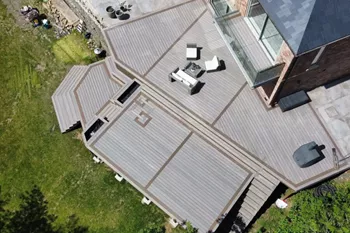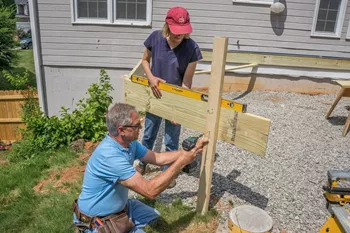Deck Beam Span & Footing Size Calculator
Deck beams and joists go hand-in-hand as the framing materials for your deck. While joists provide a horizontal support system for deck boards, beams provide support for the joists. Your beams will need to bear the load of not only your decking materials, but additional components of the frame itself. For this reason, it’s important to calculate how many beams (and concrete footings to secure each beam) your deck will need.
Use this calculator to find out the beam span and deck footing size for your project. (Be sure to have your joist span calculations ready to enter for an accurate reading and check out our concrete calculator to determine the size of your footings.)
Use this calculator to find out the beam span and deck footing size for your project. (Be sure to have your joist span calculations ready to enter for an accurate reading and check out our concrete calculator to determine the size of your footings.)
This calculator will tell you:
- How many beams you’ll need
- Dimensions for each beam
- Diameter of Corner Footings
- Diameter of Intermediate Footings
- How many beams you’ll need
- Dimensions for each beam
- Diameter of Corner Footings
- Diameter of Intermediate Footings
| 1 |
Total Linear Feet of Beam |
Joist Length:
Post Spacing:
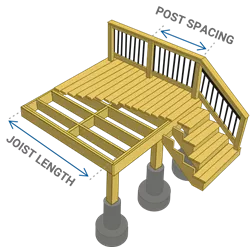
Your Beam Span & Footing Size Calculator Results
Results
| 1Beam Span: | |
|---|---|
| Southern Pine Beam: | {{ Result.SoutherPineBeam }} |
| Ponderosa Pine Beam: | {{ Result.PonderosaPineBeam }} |
| 2Corner Footings: | |
|---|---|
| Clay: | {{ Result.CornerFootingInches.Clay }}" diameter footing |
| Sand: | {{ Result.CornerFootingInches.Sand }}" diameter footing |
| Gravel: | {{ Result.CornerFootingInches.Gravel }}" diameter footing |
| 3Intermediate Footings: | |
|---|---|
| Clay: | {{ Result.IntermediateFootingInches.Clay }}" diameter footing |
| Sand: | {{ Result.IntermediateFootingInches.Sand }}" diameter footing |
| Gravel: | {{ Result.IntermediateFootingInches.Gravel }}" diameter footing |
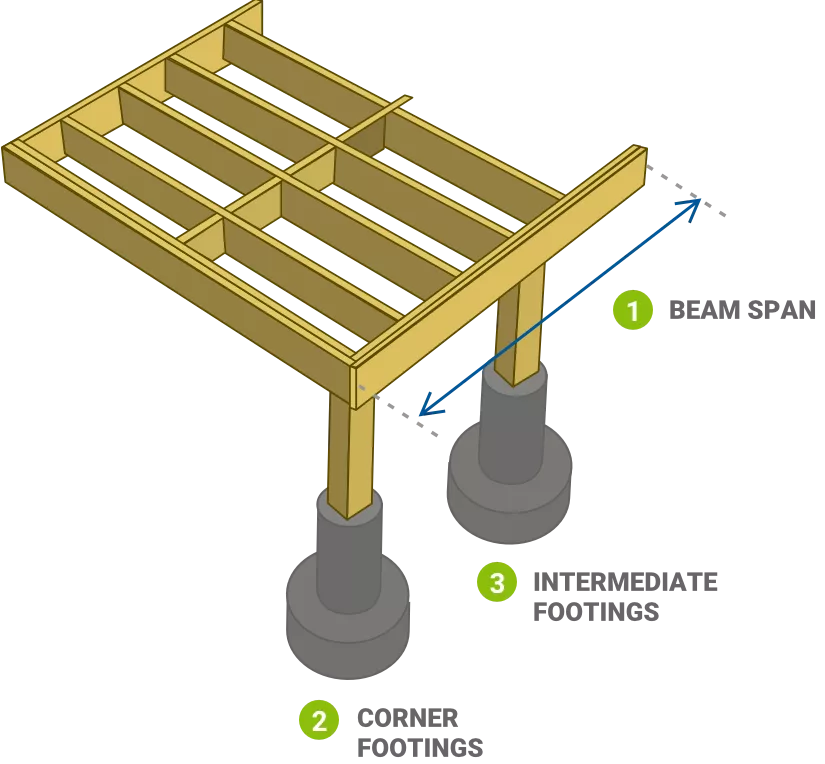
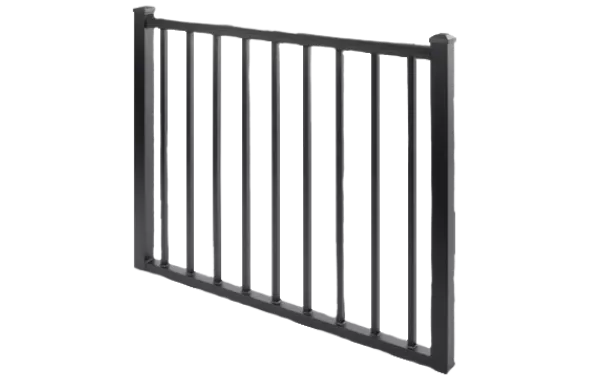
Ready to Build Your Deck?
Three tiers of premium composite and aluminum deck and porch railing provide low-maintenance options for all tastes and budgets.
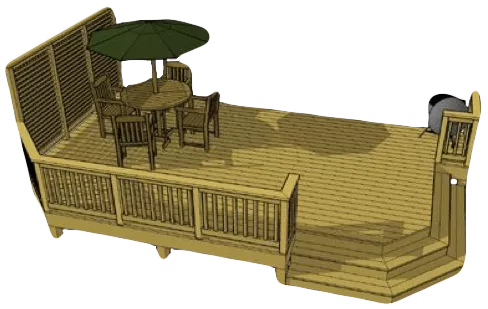
Still Planning Your Deck?
Build your own design with our free and simple deck designer software.
Learn More About Beam Span
From a safety perspective, you’ll need as many beams as possible to securely support the entire deck structure. However, from an aesthetic perspective, you’ll want to have as few beams as possible since they will be visible from your ground floor and can obstruct views. According to our beam span chart resource, the span of a beam is dependent on a few variables: the species of lumber, size of lumber, and the load it carries.
Choosing Wood for Your Deck Beam
It’s important to choose a strong, dense wood for your beams. Some of the most common types of wood used for beams include:
- Southern Pine
- Redwood
- Cedar
- Hemlock
- Fir
- Red Pine
- And combination woods, such as Douglas Fir & Western Larch (Douglas Fir-Larch), Hemlock & Fir (Hem-Fir), and Spruce-Pine-Fir
All are high-quality woods to use for framing purposes, however, your geographic region plays a role in which woods will be available to you. Redwoods, Hem-Fir, and some of the other combination woods are not available outside of the Western part of the United States. On the flipside, Pinewoods are only available in Southern and Eastern regions of the country.
If you have your heart set on a specific type of wood that isn’t locally available, that wood can be shipped to you via a supplier. However, shipping costs for large amounts of lumber can cost almost up to five times the actual price of the lumber itself.
Steel Alternatives to Wood Beams
If you’re building a deck, wood isn’t your only option for beams. Unlike wood, steel beams are not susceptible to the elements and won’t warp over time. They make for a stronger, straighter, safer, and smarter alternative to wood substructures and may be more economical in the long-run.
Steel framing materials, are machine-made, making each beam an exact replica of the beams on either side of it. Due to their strength, fewer beams or posts are needed. This means there are fewer holes to dig and fewer posts to look at from the ground floor of your home. This makes for a more attractive, unobstructed view from your front windows.
Another benefit to steel framing is that the material is non-flammable and many insurance companies offer a discounted rate for steel deck framing.
Calculator Page Ads Macro
- Ad Zone: Calculator Feature Page
- Instances Rendered: 3
Deck Beam Span & Footing Size
Deck beams and joists go hand-in-hand as the framing materials for your deck. While joists provide a horizontal support system for deck boards, beams provide support for the joists. Your beams will need to bear the load of not only your decking materials, but additional components of the frame itself. For this reason, it’s important to calculate how many beams (and concrete footings to secure each beam) your deck will need.
Learn More About Beam Span
From a safety perspective, you’ll need as many beams as possible to securely support the entire deck structure. However, from an aesthetic perspective, you’ll want to have as few beams as possible since they will be visible from your ground floor and can obstruct views. According to our beam span chart resource, the span of a beam is dependent on a few variables: the species of lumber, size of lumber, and the load it carries.
Choosing Wood for Your Deck Beam
It’s important to choose a strong, dense wood for your beams. Some of the most common types of wood used for beams include:
- Southern Pine
- Redwood
- Cedar
- Hemlock
- Fir
- Red Pine
- And combination woods, such as Douglas Fir & Western Larch (Douglas Fir-Larch), Hemlock & Fir (Hem-Fir), and Spruce-Pine-Fir
All are high-quality woods to use for framing purposes, however, your geographic region plays a role in which woods will be available to you. Redwoods, Hem-Fir, and some of the other combination woods are not available outside of the Western part of the United States. On the flipside, Pinewoods are only available in Southern and Eastern regions of the country.
If you have your heart set on a specific type of wood that isn’t locally available, that wood can be shipped to you via a supplier. However, shipping costs for large amounts of lumber can cost almost up to five times the actual price of the lumber itself.
Steel Alternatives to Wood Beams
If you’re building a deck, wood isn’t your only option for beams. Unlike wood, steel beams are not susceptible to the elements and won’t warp over time. They make for a stronger, straighter, safer, and smarter alternative to wood substructures and may be more economical in the long-run.
Steel framing materials, are machine-made, making each beam an exact replica of the beams on either side of it. Due to their strength, fewer beams or posts are needed. This means there are fewer holes to dig and fewer posts to look at from the ground floor of your home. This makes for a more attractive, unobstructed view from your front windows.
Another benefit to steel framing is that the material is non-flammable and many insurance companies offer a discounted rate for steel deck framing.
Calculator Page Ads Macro
- Ad Zone: Calculator Feature Page
- Instances Rendered: 3
Need professional help to build your deck?
Find the best deck builders near you and get a quote
By clicking FIND A BUILDER, you acknowledge that you have read Trex's Privacy Policy.

